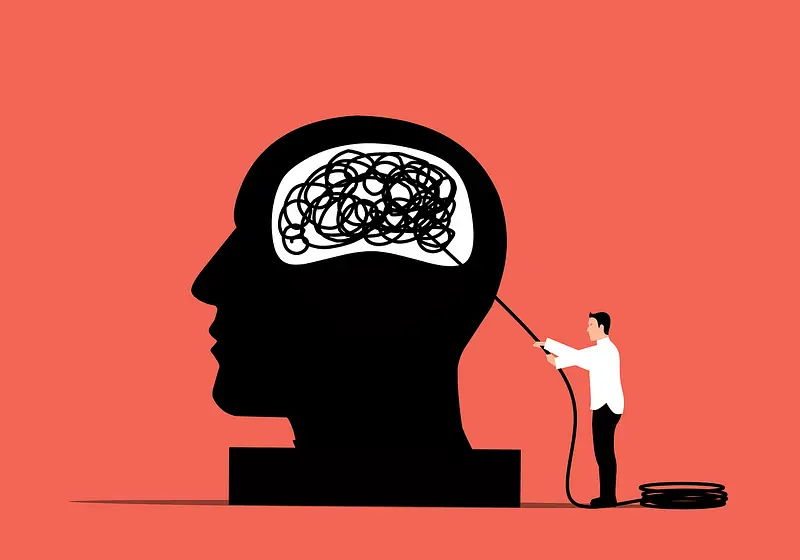Introduction
Despite the mental health crisis happening worldwide, there is still a lack of education and awareness surrounding the most common mental health disorders in the world. The lack of education and awareness has aided in creating a stigma surrounding mental health. Thus, this article hopes to explain some of the most common disorders found worldwide to bring awareness to each disorder.
Author's Note: It is important to acknowledge that I will be discussing the prevalence of disorders among males and females [censored], and intersex is not included in the research found due to the lack of research surrounding intersex mental health and various disorders.
Photo Credits: Joice Kelly on Unsplash
Let us slide into your dms 🥰
Get notified of top trending articles like this one every week! (we won't spam you)#1 Generalized Anxiety Disorder
Generalized Anxiety Disorder is characterized by ongoing worry that affects day-to-day life. Psychotherapy and medications are used to help someone with Generalized Anxiety Disorder cope. The female [censored] and children are found to be more susceptible to Generalized Anxiety Disorder, though cases are still for the male [censored] as well.
Symptoms:
- Persistent worry
- Fatigue
- Trouble sleeping
- Restlessness
Causes:
- Alterations in brain chemistry
- Genetics
- Poor threat perception
- Development
Photo Credits: Christopher Ott on Unsplash

Take the Quiz: What is your IQ level?
Find out how smart you are by taking this quiz!
#2 Panic Disorder
Panic Disorder is characterized as an anxiety disorder with unexpected panic episodes called panic attacks, where the person's body enters a stage of flight or fight with no apparent reasoning. Cognitive Behavioral Therapy, Exposure Therapy, and medication are all forms of treatment to help a patient cope with a Panic Disorder.
The female [censored] is twice as likely to have a panic disorder compared to the male [censored], showing that there might be a genetic component involved with the development of a Panic Disorder. Of course, there are still cases for males, even in smaller percentages.
Symptoms:
- Intense terror
- Nausea
- Sweating
- Derealization or Depersonalization
- Chills
- Difficulty breathing
Causes:
- Substance use disorders
- Phobias
- Mood disorders
- Medical conditions
- Trauma and stress
Photo Credits: Jan Canty on Unsplash
#3 Social Anxiety Disorder
Social Anxiety Disorder is characterized by everyday interactions causing intense anxiety, also known as a “social phobia.” Psychotherapy and medications are used as a form of treatment for Social Anxiety Disorder to help patients cope with their disorder. The female [censored] is more likely to develop a social anxiety disorder. As always, though, there are still cases found in the male [censored] as well- so it is important to give both sexes and all genders proper care regardless of their [censored] and gender identity.
Symptoms:
- Sweating
- Increased heartbeat
- Difficulty breathing
- Intense anxiety in social situations
- Intense fear of social situations
- Muscle tension
Causes:
- Genetics
- Poor threat perception
- Environment
Photo Credits: Stefano Pollio on Unsplash
#4 Major Depressive Disorder
The persistent feelings of sadness and loss of interest in day to day life characterize Major Depressive Disorder. Psychotherapy and medication are used as treatments for Major Depressive Disorder to help the patient cope with their disorder. The female [censored] is more likely to develop MDD rather than the male [censored].
Symptoms:
- Sadness
- Irritability
- Sleep disturbances
- Weight loss or gain
- Difficulty concentrating
Causes:
- Alterations in brain chemistry
- Hormones
- Genetics
Photo Credits: Alexander Grey on Unsplash
#5 PTSD (Post Traumatic Stress Disorder)
PTSD is characterized as a triggered mental health disorder from a traumatic event. Cognitive therapy, Exposure therapy, Eye movement desensitization and reprocessing, and medications are all forms of treatment to help a patient cope with PTSD. The female [censored] is more susceptible to PTSD than the male [censored].
Symptoms:
- Flashbacks
- Nightmares
- Severe anxiety
- Avoidance of reminders of the traumatic event
- Depression
- Self-destructive behavior
Causes:
- Traumatic event happening to yourself
- Witnessing a traumatic event
Photo Credits: Annie Spratt on Unsplash
#6 OCD (Obsessive Compulsive Disorder)
Obsessions of unwanted thoughts and fears characterize OCD. Psychotherapy and medication are forms of treatment to help a patient cope with OCD. The female [censored] is slightly more susceptible to developing OCD than the male [censored].
Symptoms:
- Fear of contamination
- Difficulty with uncertainty
- Unwanted thoughts
- Needing order
Causes:
- Brain chemistry alterations
- Genetics
- Learned behaviors
Photo Credits: Iulia Mihailov on Unsplash
#7 Bipolar 1
Bipolar one is characterized by severe changes in mood (manic or Depressive episodes) that affect day-to-day life. It is important to note the differences between Bipolar 1 and 2. Manic episodes characterize bipolar one and can be associated with psychotic symptoms, as Bipolar 2 is characterized by hypomania and will never indicate psychotic symptoms.
Mood stabilizers and Electroconvulsive Therapy are forms of treatment to help a patient cope with Bipolar 1. The female [censored] is slightly more susceptible to developing Bipolar 1 than the male [censored].
Symptoms:
- Depressive symptoms such as difficulty concentrating or trouble sleeping.
- Manic symptoms such as impulsivity, needing little sleep, or feeling jumpy
Causes:
- Chemical Imbalance in the brain
- Genetics
- Environmental triggers
- Substances
Photo Credits: Nathan Dumlao on Unsplash
#8 Bipolar 2
Bipolar 2 is characterized by severe changes in mood (Hypomania and Depressive episodes) that affect day-to-day life. It is important to note the differences between Bipolar 2 and Bipolar 1. Bipolar 2 is characterized by hypomania, shorter and less intense periods of mania, and does not have psychotic episodes as opposed to Bipolar 1.
Mood stabilizers and Electroconvulsive Therapy are forms of treatment to help a patient cope with Bipolar 2. The female [censored] is slightly more susceptible to developing Bipolar 2 than the male [censored].
Symptoms:
- Hypomania (a period of mania that is less severe)
- Depressive symptoms such as difficulty concentrating or trouble sleeping
Causes:
- Genetics
- Environmental triggers
- Substances
- Chemical Imbalances in the brain
Photo Credits: Bernd Dittrich on Unsplash
#9 Seasonal Affective Disorder
Seasonal Affective Disorder is characterized by a type of depression that occurs as seasons change. Phototherapy, Psychotherapy, and medications are all used to help someone cope with their Seasonal Affective Disorder. The female [censored] is more susceptible to developing Seasonal Affective Disorder than the male [censored].
Symptoms:
- Poor appetite or increased appetite related to season change
- Low energy related to season change
- Decreased enjoyment in activities once enjoyed related to season change
- Difficulty concentrating related to season change
- Oversleeping related to season change
Causes:
- Reduced sunlight causes a drop in serotonin
- Melatonin level disruption
- Disruption to circadian rhythm
Photo Credits: Siora Photography on Unsplash
#10 Anorexia Nervosa
Anorexia Nervosa is characterized by someone's fear of gaining weight or altered perception of weight. Treatment includes Psychotherapy, medication, or hospitalization to help a patient cope with Anorexia Nervosa. The female [censored] is more susceptible to developing Anorexia Nervosa than the male [censored].
Symptoms:
- Extreme weight loss
- Fatigue
- Insomnia
- Irregular heart rhythm
- Abdominal pain and constipation
- Losing menstrual cycle
- Restricted food intake
Causes:
- Environmental pressures for thinness
- Genetics
Photo Credits: Annie Spratt on Unsplash
#11 Binge Eating Disorder
Binge Eating Disorder is characterized by episodes of “losing control” and eating large amounts of food over some time. Psychotherapy is a common form of treatment used to treat Binge Eating Disorder to help patients cope with their disorder. The female [censored] is slightly more susceptible to developing Binge Eating Disorder than the male [censored].
Symptoms:
- Extreme concern with physical appearance
- Disruption of normal eating behaviors
- Hoarding food
- Fluctuations in weight
- Low self-esteem
Causes:
- Environmental pressures give body image issues
- Genetics
Photo Credits: Priscilla Du Preez on Unsplash
Conclusion
By learning about some of the most common mental health illnesses worldwide, it is crucial to remain educated and show support for those in need. As a reminder, there are cases found in both sexes for every disorder, so it is important to give both sexes and all genders proper care regardless of their [censored] and gender identity. After reading this article, there are multiple donation opportunities to show your support for those suffering from mental health disorders! Remember to always educate yourself on mental health topics to show care for yourself and know how to care for others.













